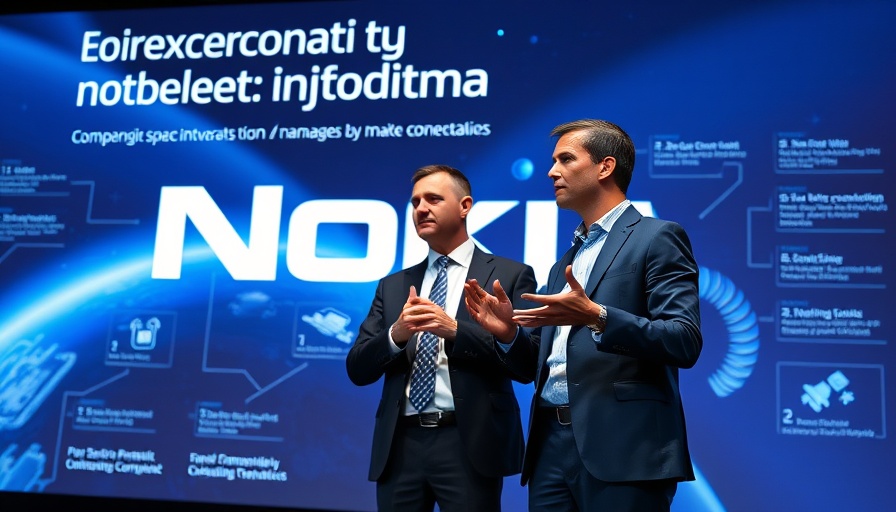
The Future of Space Connectivity: Insights from Nokia
The relentless advancement in technology is transforming our connection to the universe, and Nokia is at the forefront of this revolution. In a recent podcast episode featuring Terry Klene, president of Bellab Solutions Research at Nokia, the conversation illuminated how Nokia is building the future of connectivity beyond our planet. This article delves into the fascinating advancements in space technology and their implications for both life on Earth and our endeavors in space.
In 'Building The Future Of Space Connectivity With Nokia', the discussion dives into how advanced telecommunications are shaping our future both on Earth and beyond.
The Invisible Backbone of Modern Life
Most people underestimate the integral role space plays in their daily lives. From the satellites that allow critical communications to GPS systems enabling precise navigation, the technological advancements arising from space exploration are vast. Klene emphasized that these capabilities began as far back as 1962, with the launch of Telstar 1, the first communication satellite, which was instrumental in establishing transatlantic communication. This pioneering technology allowed real-time video and data transfers, forming the foundation for globally interconnected networks.
Expanding the Horizons of the Lunar Economy
With Nokia's vision for the lunar economy, we are entering an era where aspirations stretch beyond just visiting the moon. Nokia's initiatives include deploying operational systems that will enable sustained human presence on the lunar surface, supporting scientific exploration and commercial opportunities. As we contemplate the future, Klene posited that the communication infrastructure on the moon will be a critical component for future lunar missions, echoing the need for advanced technology to maintain contact with Earth.
The Challenges and Innovations of Space Networking
Nokia's achievement of establishing the first cellular network on the moon earlier this year highlights the incredible engineering challenges that come with building technology for extreme environments. The low-gravity, high-radiation environment of the moon presents unique difficulties that differ greatly from terrestrial deployments. Klene reviewed the importance of redesigning traditional telecommunications systems to withstand these challenges and operate efficiently in such extreme surroundings. Innovative solutions must also maximize size, weight, and power efficiency – all critical factors when launching components into space.
Influences on Earthly Technologies
What’s compelling about advancements in space technology is that they don’t just benefit lunar missions—they provide innovative ripple effects back here on Earth. Klene pointed out that remote industrial applications, such as operations in offshore oil rigs or remote mines, stand to benefit immensely from the optimized technologies being developed for space operations. This innovation not only represents progress in space but can also potentially improve efficiencies in everyday industrial practices.
Predictions for the Future of Space Communication
Looking ahead, Klene prognosticates that by 2040, we could witness daily commercial flights to low Earth orbit and lunar robotic missions taking place weekly. This will not only enhance our capabilities in space but will also pave the way for sustained human presence on the lunar surface. It envisions a future where astronauts can simply deploy devices connected to a built network, analogous to how we operate technology on Earth.
In summary, discussions surrounding space connectivity and Nokia's forward-thinking initiatives provide not just a glimpse into the future but an urgency for all tech-savvy investors, researchers, and entrepreneurs to consider their role in this evolving landscape. With rapidly decreasing launch costs and emerging partnerships, the lunar economy is no longer science fiction—it’s on the verge of becoming reality. Stay tuned to the developments and discover how you can get involved in the booming sector of space exploration.
As we continue exploring these innovations, consider how they relate to your professional interests. Are you ready to engage with the future of space communication? Become part of the conversation and explore the opportunities that await. Join us in our journey beyond Earth.
 Add Row
Add Row  Add
Add 




Write A Comment